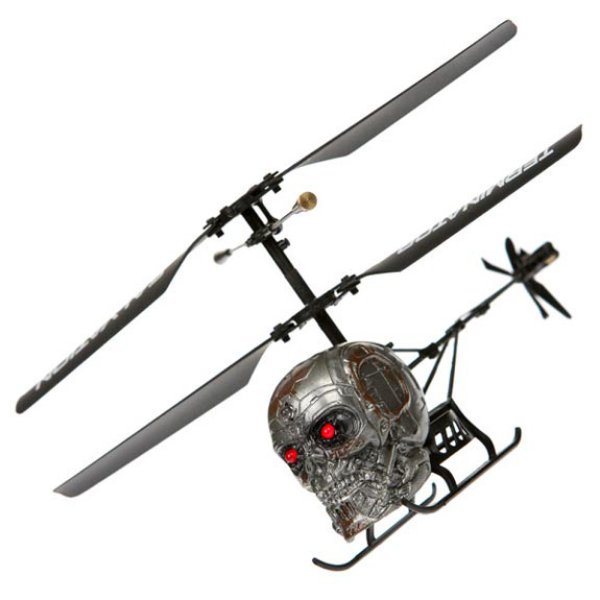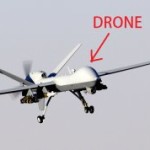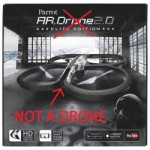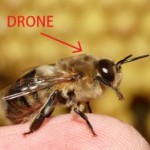I don’t know when remote control helicopters became drones, but I think its way past time we stop implying that a fancy RC helicopter with a camera strapped to it is some sort of autonomous Terminator robot.OK sure, in the beginning I know that somebody though that “drone” sounded a lot cooler than “model airplane”.
Its exactly the kind of thing the model airplane geeks I know would adapt instantly. Not to mention, I’m sure selling “drones” is a lot easier than selling “remote control model helicopters”.
(In the interest of search engine optimization and my penchant for hypocrisy, I am however going to refer to RC model helicopters as drones for the remainder of this article.)
But enough is enough – real drones kill people with missiles or make honey, pretend drones hunt down humans in a dystopian near future – a remote control helicopter with a camera flies around and takes pictures of stuff.
VOLUNTARY CODE OF CONDUCT FOR DRONE PHOTOGRAPHY
Since the operation of remote control drone aircraft for the purpose of taking photos and recording video is still legally a little ambiguous, I propose a voluntary code of conduct for drone photography.
Really there only needs to be one rule:
Don’t be an idiot.
But, since rules control the fun, here are a few suggestions for the safe operation of remote control model aircraft from the Academy of Model Aeronautics – AMA Model Aircraft Safety Code.
There are a few main points:
- Yield the right of way to all human-carrying aircraft (duh).
- Do not fly higher than approximately 400 feet above ground level within three (3) miles of an airport without notifying the airport operator.
- Do not exceed a takeoff weight, including fuel, of 55 pounds.
- Avoid flying directly over unprotected people, vessels, vehicles or structures (that might prove a challenge to anyone except landscape photographers).
- Maintain control during the entire flight, maintaining visual contact without enhancement.
However, the AMA pretty much excludes all aerial drone photographers and videographers as their first person view (FPV) rules of operation state:
The use of imaging technology for aerial surveillance with radio control model air, craft having the capability of obtaining high-resolution photographs and/or video, or using any types of sensors, for the collection, retention, or dissemination of surveillance data information on individuals, homes, businesses, or property at locations where there is a reasonable expectation of privacy is strictly prohibited by the AMA unless written expressed permission is obtained from the individual property owners or managers.
Source: DIY Photography





I totally agree with the above and the sentiment that goes with it. The RC camera carrying community (RCCCC) needs to be able to ‘regulate’ itself and a good Code of Practice is one of the best ways to go about this. There is little point in waiting for rules to be imposed upon you by the regulating authorities, it is far better to establish a common set of workable ‘rules’ that the likes of the FAA will more than likely adopt. It is easier to establish compliance with a willing party rather than impose restrictions that will inevitably be met with resistance and ultimately have to be accepted.
Obviously the lawmakers have to make rules to suit everyone and not just a minority but given the strength in numbers of the RCCCC aka ‘drone operators’ it is in the best interests of all concerned to adopt sensible practices and to enable the community to regulate itself.
It is a little worrying that the first comment was ‘don’t be an idiot’ – surely this is a simple everyday lesson of life and should not have to be spelt out. The RC community has been dogged with fools and their toys. If we want to be able to use aircraft in airspace then we must al least show that we have competency and demonstrate a safe trustworthy attitude if we are to be taken seriously.
In short don’t wait for the FAA to tell you what to do, show the FAA what you can do.
Steve
Quite agree,
I don’t use one as yet (as an Aerial & Mast photographer), and when it’s mentioned, I keep having to correct people by saying literally your comment as above – Drones kill or sting !
Remote UAV is more apt.
Actually, drone honeybees do NOT sting and do NOT make honey. They do not have a stinger and only exist to mate with a queen on her mating flight, after which the drone dies. They do very little work inside the hive and are usually driven out to die in the winter.
http://en.wikipedia.org/wiki/Drone_(bee) “he soon dies because the penis and associated abdominal tissues are ripped from the drone’s body after sexual intercourse.”
Yes, I’m a beekeeper and an R/C quadcopter flyer.
Haha! I was going to make almost the same comment. A drones life consists of eating, having sex, and dying. Which isn’t all bad I guess…
Great minds think alike and all that.
I flew the Aquila, one of the first Remotely Piloted Vehicles (RPV), as they were called back in the early 80s for the US Army and we were always quick to correct those who called them drones. Back them we understood that drones were a category for aerial targets to be shot down.
I would posit that not even military UAVs should be called “drones”. Etymologically speaking, drone should only refer to a male bee.